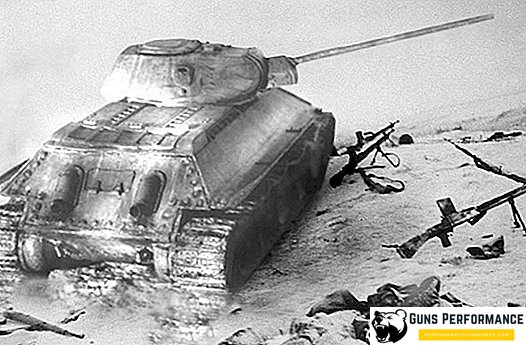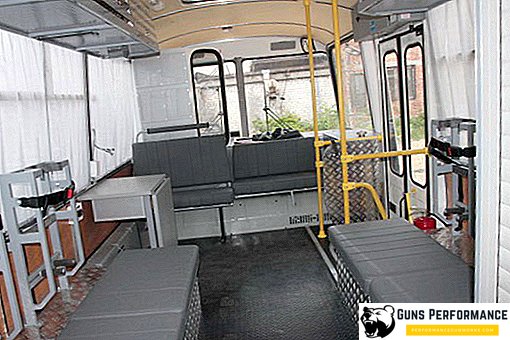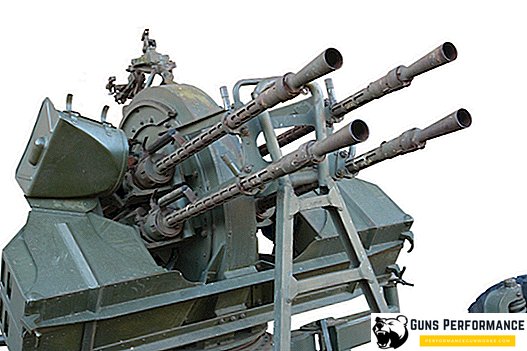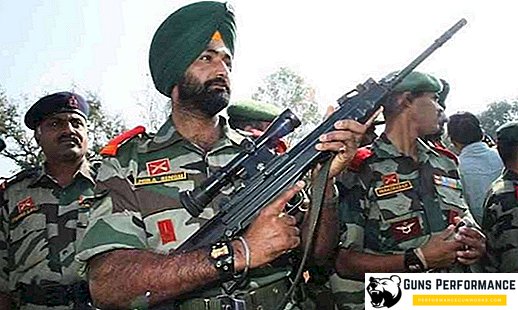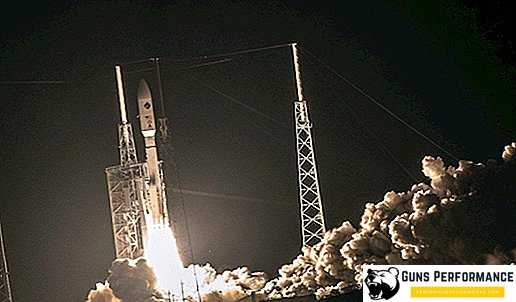Traditionally, the names of patrol ships are selected in the form of adjective parts of speech, which sometimes leads to their very accurate names. So, for example, "Guarding" was the first child in project 20380, the initial symbol in the class of patrol ships. “Boky” is a more solid and successful piece of shipbuilders, which has become the third serial in the list. In decades, it is time for the eminent “Reasonable” - since if the ship becomes truly mass, it will be the best demonstration that the choice of direction to the new classes of corvettes was made correctly.
Patrol ships, as a class in the coastal zones since the days of the Soviet Union, is precisely the very well-known, empty place for decades. Why this happened, you can find out, having familiarized with the history of the "Novik" - the ship of the project 12441.
So, in the early 1990s, approved the project 12440, which was designed according to the latest technologies of the time with:
- Gas turbine power plant, having two cruise and two afterburner engines;
- The hull and superstructure, made with the addition of materials from the composite, which gave a small radar visibility corresponding to stealth technology;
- The most modern and promising at that time anti-aircraft missile complex "Polyment / Redut", hangar, which was constantly based anti-submarine helicopter.
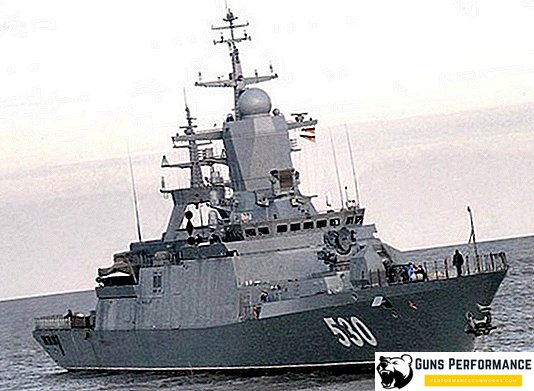
Later, after three years, they completed the adjustment of the project caused by the collapse of the Union. Because of this, many of the alleged suppliers at one point became foreign. The project had to be repeatedly upgraded during the construction process. We worked to improve the ship's running and combat parameters. Simultaneously, they worked on its displacement, and it significantly exceeded the initial characteristics of the task. "Novik" managed to get close to the classes of ships that are capable of long patrols and escorts of ships, while remaining possessing excessive parameters for service in the coastal waters.
As a result, with the most advanced Russian ship in technical terms, they acted as often it happens: he was retrained in the training, but was not completed. Something similar happened with another project 11540. It was “Fearless”, which was developed in the 1970s. He was conceived as a small anti-submarine ship with a displacement of eight hundred tons, but in a few years it rose to one and a half thousand, then to two thousand, and with a helicopter it even reached two and a half tons, once in the sea zone. As a result, the "Fearless" was launched into the water only twenty years later.

Of course, the fast, well-protected and armed "Novik" is not difficult to cope with all sorts of tasks of the coastal waters. Its critical flaw was cost. Although in guarding maritime borders, as well as in order to promptly respond to any local territorial conflict, it is necessary to look closely at patrol ships, there should be an optimal number of them.
As a result, at the very end of the nineties, a competition was announced for the development of lighter and cheaper escort ships. It was won by the Almaz Central Marine Design Bureau, which designed Novik.
Ships of the project 20380 of the “Steregushchy” type, and later, both “Boky” and “Stable” promised to be the basis of the Russian Navy in the coastal area. And, despite the great cheapness in relation to the "Novik", he, no doubt, has become the most innovative and technically advanced project in the domestic fleet.
Among the innovations can be noted the appearance of recycled hull lines, and with them the reduction of hydrodynamic resistance, a helicopter hangar, first placed on such a small ship. The most important breakthrough was achieved in the use of a single information complex for the management of weapons and electrical equipment. At the same time the ships received new class designations corresponding to the time and international terminology. This was not the "patrol", and corvettes.
Invisible, streamlined - "invisible"
In comparison with the previous ones, the project 20380 is already called successful today. Some journalists were even lucky to climb the Boiky, which stood at the factory berth of the Severnaya Verf plant when the final stage of the factory testing was in progress. Others, "Steregushchy" together with "Smart", are already in service with the Russian Navy. Several more corvettes, including the Stoichi, laid down the Severnaya Verf and the Amur Shipbuilding Plant.
The main components of the success of the project 20380 were carefully designed structures in the case, as well as a single electronic automation system. This was mainly reflected in the fighting qualities, and the composition of weapons, and comfort for the crew, as well as reliability, maintainability and the possibility of upgrading machines.

Circuits in the steel case of the ship were engaged, without having experience of their developments. However, everything went so well that they managed to reduce the hydrodynamic resistance by 25%. Due to this, the light main power plant was used not so powerful. This resulted in the release of more than 15% of the displacement and increased the combat load, as well as a list of various weapons, including a helicopter platform, for a 1500-ton ship. Moreover, there was a place for the Ka-27 antisubmarine helicopter, a place for the hangar and twenty tons of fuel for the helicopter.
The improved seaworthiness of the corvette made it possible to use its armament at five-point riots, which is two points more than its predecessors. In addition, a weaker GEM could work quieter, which reduced the visibility of the ship in the hydroacoustic ranges. To reduce the noise in the engines, applied techniques tested on submarines.
The main power plant consists of two diesel-diesel units, which were specially developed at the Kolomna Plant, based on the proven D49 diesel engine based on microprocessor control. The power of the main power plant can reach up to 24,000 horsepower. With four diesel generators of 630 kW, an on-board network is provided from each of them.
"Stereguschy" not just began to be called - invisible. During construction, the principles of stealth technologies were applied, which are an essential attribute in modern ships of such classes. The wide ship superstructure was made of a slow-burning, radio-absorbing glass-carbon plastic. Posts antennas with missile weapons were removed inside the case. With the "Package-NK", four-tube 330-mm torpedo tubes PTZ received correctly: hid in lazport. In total, the average circular effective scattering surface in the ship was reduced by a factor of three when compared with its predecessors. Due to this, the probability of targeting and getting into it by anti-ship cruise missiles decreased from 0.5 to 0.1.

Hand in hand
The introduction of a unified combat information and control system can be called the main innovation in the project 20380, which affected the tactical characteristics of the ships, the crew’s living conditions, the reliability of all technical means, as well as high-speed modernization in armaments. Previously, the systems were located in different places of the ship, and all coordination was entrusted to the crew. Now it is entrusted to an integrated bridge system that controls all ship systems, from mechanical to weapon systems.
Also in the integrated bridge system there are a couple of components:
- Missile and anti-submarine control section;
- Section for the control of radar combat and lighting air, surface and submarine conditions.
The first section has three posts located hand in hand right next to the bridge. These are the places of work of the warhead commanders. One is engaged in anti-submarine warfare, and the second - anti-ship complex. The appearance of their posts is almost the same. It consists of large screens that display information about targets and combat systems. The same screens are possessed by the corvette commander and watch officer.
The third BC commander coordinates all weapons systems, and also issues recommendations to the ship commander when weapons are used. An important aspect is the fact that the commander of the ship, with the steering, watch officer, as well as the commanders of the CU reside in the walls of the same room, and this contributes to the lightning-fast adoption of coordinated decisions and their immediate execution.
Corvettes are equipped with weapons coordination systems and multiple target detection systems. The technical sides are almost unknown, but it is noted that each new system on the new ship becomes even stronger.

Its essence is that information about air, surface and submarine conditions, the detected targets and connections, are concentrated as a single center, and are also processed. The system determines the dangerous level of the target, decides on the type of weapon that must be used. Further, this information is sent with lightning speed to the nearest ships, helicopters and airplanes for overall coordination of further activities.
To use such a system would be logical in cooperation with helicopters, which are invulnerable to submarines, and the use of active tools for sonar detection, has indisputable advantages over ships when illuminating underwater conditions. The most automated all systems of the ships led to a multiple decrease in the time required for making any decision, as well as to facilitate the work of the crew and reduce its number to one hundred military personnel.
Corvettes are ready for upgrades.
Integrated information networks on ships entail additional benefits associated with reliable, maintainable and speedy equipment upgrades. Industrial and research organizations from all of Russia, and there are thousands of them, have been involved in the processes of building corvettes, but with modern electronic technologies, many components have decreased and become easier.
Modular concepts of ships provide for the possible installation of new weapons as it enters the action. In particular, if the title ship of the project 20380 “Steregushchy” was equipped with the Kortik-M anti-aircraft missile system, the “Boky” got a more modern and more powerful Redoubt, and the “Resistant” received an even more advanced weaponry.
Corvette "Resistant"

The Corvette "Resistant" is the third serial corvette in project 20380, built for the Baltic Fleet. This is a fundamentally new ship for the Russian Navy, whose tactical and technical characteristics and combat properties are an order of magnitude superior to those in its class.
The most important feature of the corvette is that it is sharper, multifunctional, flexible, compact, subtle, with a high level of automated and integrated systems. The project provides significant potentials for its further modernization. Corvette project 20380 with a displacement of more than two thousand tons, a hundred meters long and thirteen meters wide, develops a speed of up to twenty-seven knots. The range of sea crossings that a ship can make is increased to four thousand nautical miles. The ship is not as loud as its predecessors were.
The Corvette is armed with a hundred-millimeter universal artillery complex, an anti-aircraft missile and artillery complex. In addition, armed with supersonic missiles and automatic artillery installations. The aircraft group of this vessel, however, as in the previous corvettes, included one Ka-27PL helicopter. The ship received a strict appearance that meets all modern requirements of Stealth technology.
Serial, but different in their originality corvettes

As often happens with all new projects, the ships met on their ways a lot of criticism. Basically, insufficient navigation range has been criticized. However, this is still due to the fact that the class of corvettes in the Russian Navy’s arsenal was absent in the past. Skeptics must understand that the very list of tasks facing the Navy has changed significantly. To date, have at your disposal dozens of corvettes where more relevant than to possess a small number of ocean destroyers.
Discussions were often started because of shipboard armaments; security and tenacity were doubtful. Nevertheless, it is also not easy to pay attention to these qualities, if you do not have at least a general understanding of the tactical schemes that characterize the classes of corvettes themselves. Although the project itself is promising, but not yet perfect.
In the first few years of service and combat activities on the "Guarding" two times there were problems with the main power plant. These emergencies have become pretexts for comparing a “diesel-diesel” with a gas turbine engine, which is more reliable and light, but incomparably more expensive.
Also, the Corvette "Boyky" could not immediately enter service when problems were discovered in a hundred-millimeter artillery mount. "Universal" refused to operate in a normal mode, not only on the project itself 20380. The same fate befell the Indian frigate from the Russian manufacturer.

Anyway, the main advantage of all ships of the corvette type is their flexibility. Diesel installations have the potential for improvements, artillery installations can be replaced, but the ships themselves will not remain on the stocks and will not turn into "unfinished". According to the developers of the corvettes, none of the ships will repeat the previous one. Actually, due to its flexibility, availability, seriality and, in the long term, the mass production of Russian-made corvettes, project 20380 expects great success, however, like all Russian Navy forces.


